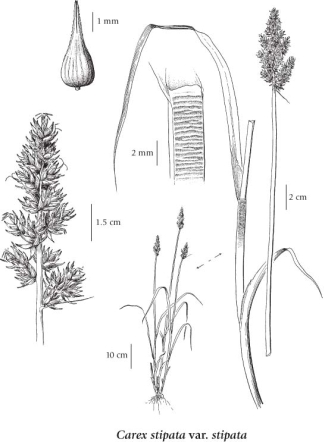Carex stipata Muhl. ex Willd. var. stipata
awl-fruited sedge (owlfruit sedge)
Cyperaceae (Sedge family)
Introduction to Vascular Plants
awl-fruited sedge (owlfruit sedge)
Cyperaceae (Sedge family)
Introduction to Vascular Plants
